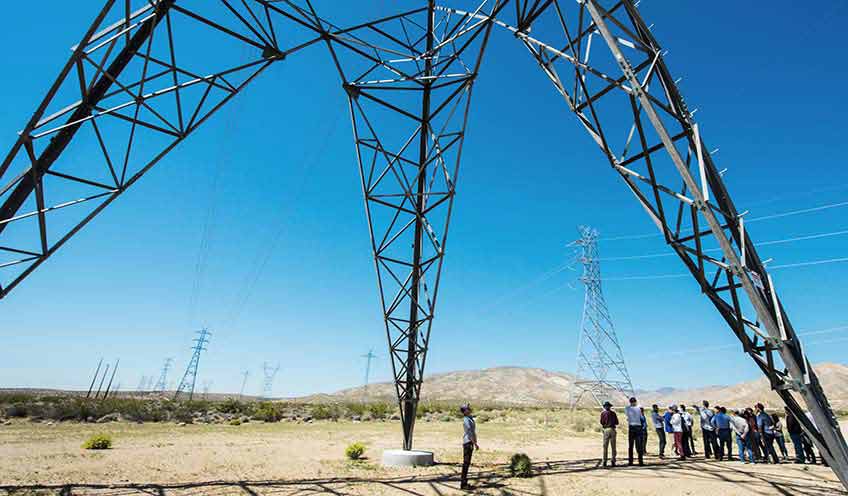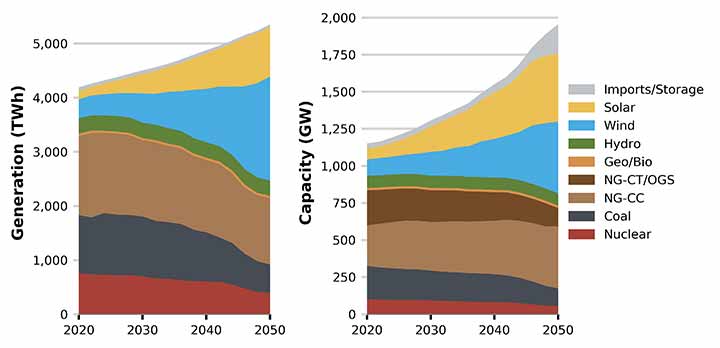Now Publicly Available, NREL's ReEDS Model Expands Access to Inform the Power Sector

What might the U.S. energy generation mix look like between now and the year 2050? Thanks to the publicly available Regional Energy Deployment System model, or ReEDS for short, we can now explore how the power system will evolve under changing market conditions.
ReEDS, the National Renewable Energy Laboratory’s flagship capacity planning model for the North American electricity system, simulates the evolution of the bulk power system—both generation and transmission—from present day through 2050.
Featuring high spatial resolution and advanced algorithms for representing the cost, value, and technical characteristics of integrating renewables into the electricity system, ReEDS depicts energy production and consumption through a regional lens—and it’s now publicly available.

Used in studies resulting in more than 100 publications—and major NREL analyses including the Electrification Futures Study, North American Renewable Integration Study, and Renewable Electricity Futures Study—ReEDS identifies the least-cost set of electricity sector investments required to meet energy, capacity, and ancillary service requirements. The model considers a large suite of generating technologies, including fossil, nuclear, and renewable technologies, as well as transmission and storage expansion options.
“We use ReEDS to inform a wide range of electricity sector research questions, including clean energy policy, renewable energy integration, technology innovation, and other forward-looking generation and transmission infrastructure issues,” said NREL’s Wesley Cole, a senior energy analyst who has led the efforts to release the ReEDS model.
For examples of recent topics and trends observed in the ReEDS model, see the 2018 Standard Scenarios Report: A U.S. Electricity Sector Outlook. Using the Standard Scenarios Results viewer, one can compare the contributions of each technology category, such as biopower, nuclear, or land-based wind, to the total estimated generation or capacity both now and through 2050. ReEDS also allows one to take a closer look at other model outputs, such as emissions or electricity prices.
“We have been using and developing ReEDS at NREL for more than 18 years. It has been a valuable tool for us in providing insights to important power sector questions,” Cole said. “In sharing ReEDS, our hope is that others can build on what we have created to further the research and analysis happening this space.”
Get a ReEDS 101 on Oct. 31
On Thursday, Oct. 31, at 11 a.m. Mountain Time, NREL will host a free webinar explaining the ReEDS model and its uses, as well as opening the floor for Q&As. Please join us to learn more about how ReEDS can lead to better-informed energy decisions, policies, and infrastructure planning.
Register for the webinar, and visit the ReEDS website to request access to the model.
Last Updated May 28, 2025
